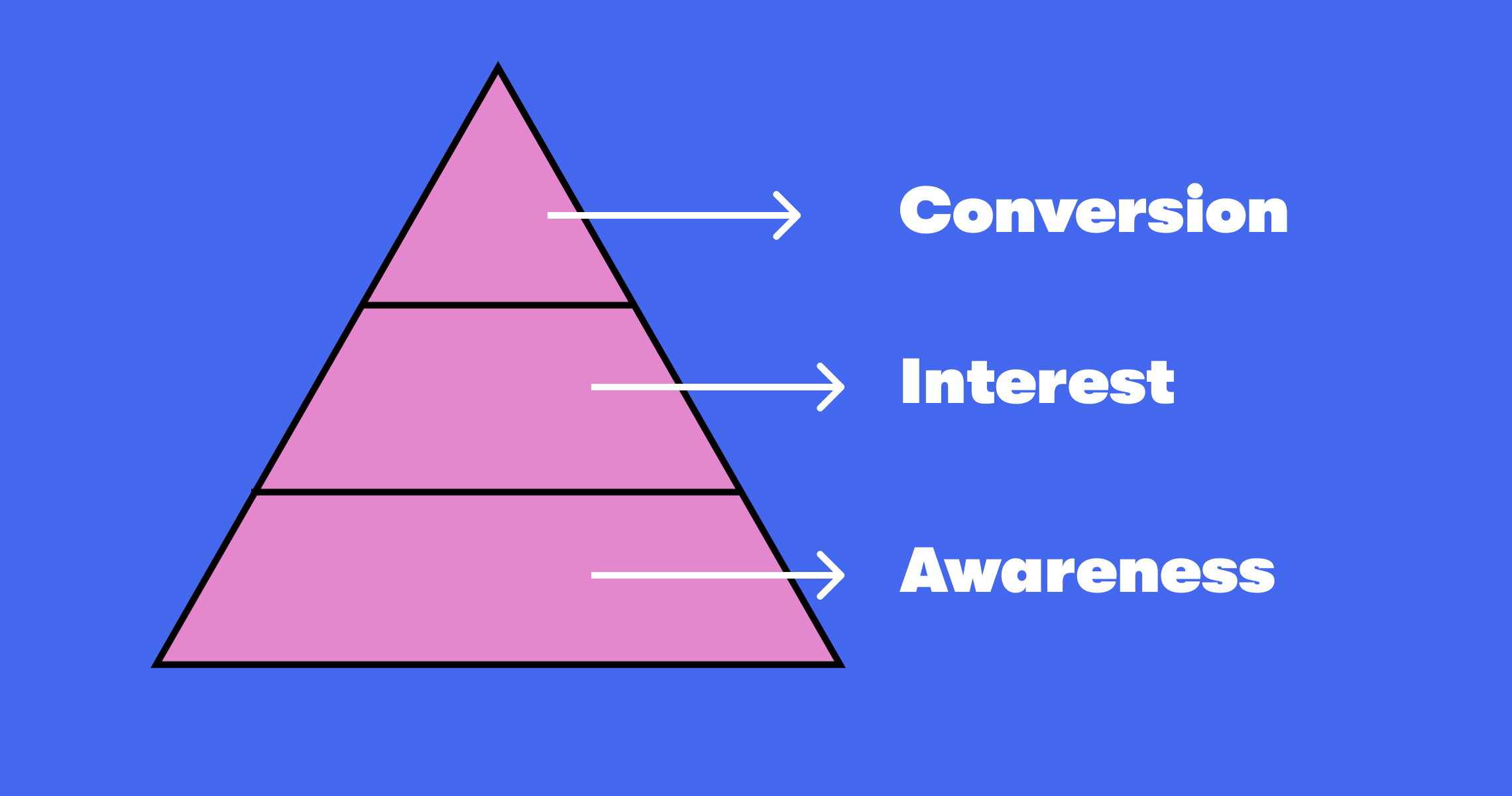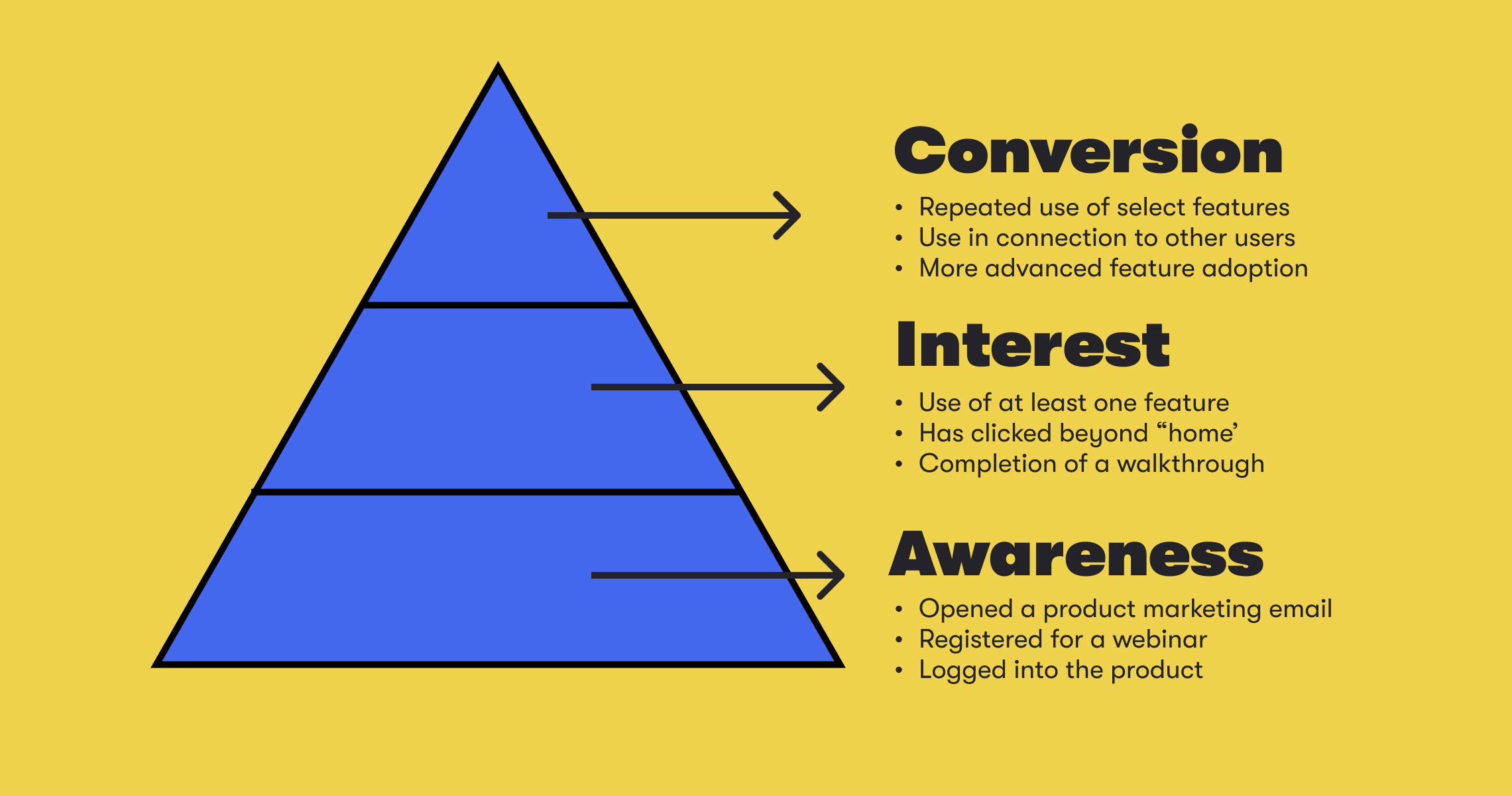You probably already know that MAU, or monthly active usage, isn’t the only metric for SaaS success.
MAU, or monthly active usage, is a measure of the number of users who have done something meaningful in your product over the last month.
But even software companies with the most sophisticated growth strategies get MAU tunnel vision. And it’s understandable. How can active use not be the singular signal of adoption? If they’re using your product, they’ll keep using it, right?
Taking this view is understandably tempting. But – it’s too simplistic. Growth-minded, diligent software companies recognize that there are more signals to track and respond to – and much, much earlier than MAU allows for.
Fundamentally, end-user conversion is a funnel, not a switch. And when we become so fixated on MAU as the ultimate indicator of adoption, we fail to see all of the other factors that may tell us something meaningful much earlier. Doctors don’t determine whether their patients are in good health based on whether or not they are still alive.
There are several models available to help us understand the end-user experience in a more sophisticated and actionable way, including:
- Prosci’s ADKAR change-management model
- The stages of the marketing and sales funnel
- Maslow’s hierarchy of needs
- The AIC Framework (let’s dig into this one)

The AIC framework illustrates what we already know about human nature but often fail to consider. People test-drive cars before they buy them. In order to drive the specific end-user behaviors that convert users to your product long-term, you can’t neglect the “awareness” and “interest” stages of their journey. Different activities are meaningful for different stages of end-user engagement.
We fail to account for human nature when we design products and best practices with the singular goal of getting a user to take the most meaningful actions in our products.
SaaS organizations that are serious about growth are cautious not to use MAU as the golden standard for adoption and retention likelihood. While it’s one metric worth keeping an eye on, MAU is flawed because:
1. It’s incredibly subjective.
- MAU is based on specific user actions that a software vendor has defined as the most indicative of a converted end-user. If those defined actions aren’t data-backed in driving sustained adoption, they’re not measuring anything meaningful.
- Different products deliver value based on different usage patterns. I use my surveying app once a month while I use my chat tools daily, but both are highly integral to my work.
2. It’s a lagging indicator.
- MAU provides insights into user activity over a fixed period, typically a month, which means changes in user behavior may not be immediately apparent. This lag makes it challenging for companies to respond promptly to emerging trends or issues, potentially leading to missed opportunities or delayed interventions.
- MAU might not accurately reflect user engagement within the month because it treats all users equally, regardless of the frequency or intensity of their interactions. This can result in a skewed representation of actual user engagement, making it tough to discern between active and passive users.
While keeping an eye on MAU as one signal is valuable, companies will benefit from supplementing MAU with more dynamic and real-time indicators to obtain a more comprehensive understanding of user behavior. You’d never expect to finish a marathon in five hours if you were already two hours behind at mile marker 10.
So - rather than only focus on measuring the user behaviors that signal conversion, start measuring user engagement much earlier – at the “awareness” and “interest” levels of the AIC pyramid (for example).
Identify and study the activity and behaviors that indicate a user has awareness of your product, is interested in how it might help them, and has integrated it into their regular workflow. Then, isolate the levers in your control that get them to take those actions.

While the terminology differs between different models and frameworks for end-user conversion strategies, the principles are the same:
- Users need to know your tool exists.
- Users need to believe a tool might help them.
- Users need to know their leaders are invested in the tool.
- Users must be able to easily learn how to use the tool.
- Users must get value from your tool.
Detect customer adoption signals earlier with BrainStorm
Rather than a passive, centralized learning portal (external LMS), or a click-along product walk-through (DAP), BrainStorm gives software providers the ability to roll out a comms-based training platform to every single customer that they can also globally manage themselves. It’s a truly customer-led model.
BrainStorm was purpose-built to help software vendors educate, activate, and convert end users, facilitating sustained adoption. By detecting earlier signals in users’ conversion journeys, software vendors are enabled with the intelligence to know and act earlier.
Request a demo or a free trial today.


